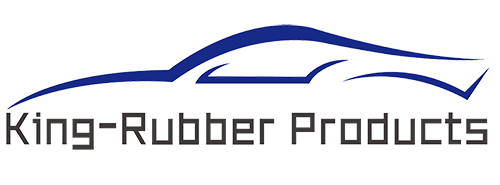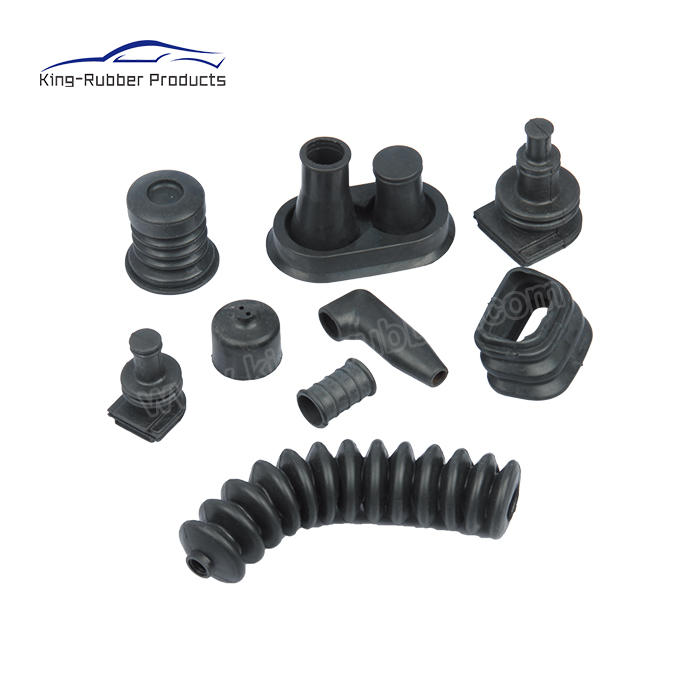Natural Rubber
Natural rubber is obtained from latex, a natural secretion of certain plants. Latex is composed of long polymer chains which must be partially broken between rollers or rotating blades to soften or grind the rubber before adding compounding ingredients. Compounded rubber is then sheeted, extruded in a specific shape, applied as a coating, or molded for vulcanization.
King-rubber uses natural rubber in products such as belting, hoses, tubing, insulators, valves, and gaskets. Natural rubber can withstand low temperatures which allow the material to bond easily with metal parts. Additionally, natural rubber parts have a high resistance to tear and abrasion.
Neoprene
Neoprene is the trade name for a group of synthetic rubbers based on polychloroprene. Polychloroprene is composed of chloroprene, acetylene, and hydrochloric acid. Modifying the chemical structure by adding elements yields a broad range of chemical properties. King-rubber’s materials selection and formulation process results in the superior performance of any rubber part.
Neoprene rubber was originally developed as an oil-resistant alternative to natural rubber. The versatility of this rubber, however has proven useful in a wide range of applications. King-rubber commonly uses neoprene rubber in industrial applications such as gaskets, hoses, and corrosion-resistant coatings. Neoprene rubber resists damage from sun, ozone, weather, extreme temperature, and flexing or twisting
Ethylene Propylene Diene Monomer (EPDM) Rubber
EPDM is a synthetic rubber compound that consists primarily of ethylene and propylene. The addition of a small amount of diene allows for the curing of rubber with sulfur, which changes the structure of the chemical structure to that of an unsaturated polymer. EPDM rubber is similar in its properties to Neoprene rubber.
King-rubber EPDM resists degradation from ozone, oxidants, high temperatures, and extreme weather conditions. Additionally, EPDM rubber has superior color stability and dielectric ability. King-rubber uses EPDM synthetic rubber compounds for both general and specialty outdoor applications, including steam hoses, high temperature-resistant seals, electrical insulation, roll covers, and more.
Styrene Butadiene Rubber (SBR)
Styrene Butadiene Rubber (SBR) is the most common and economical synthetic rubber compound available and is used in a broad range of industrial applications. Styrene butadiene rubber is a polymeride created from styrene and butadiene. Oil refineries derive styrene and butadiene from petroleum, then combine 25% styrene with 75% butadiene to make SBR.
King-rubber uses SBR in their molded rubber products because of SBR’s resistance to chemicals, solvents, and extreme heat. SBR is a synthetic compound that can be easily and effectively bonded to an assortment of materials. Because SBR’s properties are also similar to natural rubber’s, styrene butadiene rubber can replace natural rubber in many products.
Butyl Rubber
Butyl rubber is a synthetic rubber compound or copolymer composed of isobutylene and isoprene. Isobutylene is a chemical compound consisting of methyl and propylene while isoprene, consisting of menthyl and butadiene, makes the rubber unsaturated and able to vulcanize. Today, Butyl rubber is one of the commonly-used synthetic rubber compounds on the market.
Pierce-Roberts Butyl rubber resists abrasion, oxidation, corrosion, and gas permeation, which allows Butyl rubber to prevent the leakage of gas. Additionally, Butyl rubber has a high dielectric strength. Common applications include inner tubes, o-rings, stoppers for medical bottles, and pharmaceutical supplies.
Post time: Nov-02-2020





